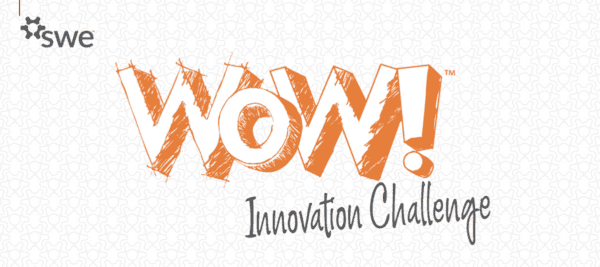Karen’s article on Diversity and Inclusion (D&I) was originally published by Forbes.
The Business Case For Diversity And Inclusion
“Diversity and inclusion” (D&I) has become quite the buzz phrase. As the media covers more cases of gender or minority bias and sexual harassment in the workplace, organizations are putting a firmer focus on how they can get in front of the issues by establishing programs that address D&I.
A recent report by Willis Towers Watson indicates that 55% of employers have taken steps to communicate their inclusion and diversity initiatives as they pertain to workplace culture and policies, while nearly three-quarters indicate they intend to do so over the next three years. Attracting and retaining talent as well as driving employee engagement were found to be the most important factors behind promoting D&I within the workplace.
This is a step in the right direction, and there certainly is a business case for D&I. But it goes deeper than what this report has found. Diversity and inclusion initiatives are key to eliminating (or controlling) implicit biases in the workplace that affect who is getting hired, who is getting promoted and who is getting which assignments.
There is a direct correlation between levels of bias found in the workplace and feelings of inclusion at work, as well as the desire to stay or leave an organization. Implicit bias is found to mostly affect women and minorities in the U.S., but also men in other cultures across the globe.
How Bias Manifests Itself In The Workplace
My organization, the Society of Women Engineers (SWE), conducted a study in the United States called “Climate Control: Gender and Racial Bias in Engineering,” identifying four basic patterns of bias women and minorities experience in the engineering workplace.
Respondents reported instances of bias including feeling the need to prove themselves to get the same level of respect as other colleagues and feeling that they could not behave as assertively as others in the workplace without getting pushback because of their gender or race. Other instances of bias included being assigned more office “housework” or administrative tasks and not having access to desirable assignments or networking opportunities as colleagues.
We followed this U.S. study with a comparable study in India, which found similar instances of bias. However, this study found that both men and women face bias in the Indian engineering workplace, but in different forms. Women experience gender bias, while men experience bias based on location and language.
Implicit biases are driving certain employees out of leadership positions and resulting in a less diverse workforce, impacting the bottom line. In “Innovation, Diversity and Market Growth,” researchers from the Center for Talent Innovation found that teams that have one or more members who represent the gender, ethnicity, culture, generation or sexual orientation of a target market are as much as 158% more likely to innovate effectively for that end user.
Making A Change In Favor Of D&I
The research is clear that diverse perspectives fuel innovation. Here are a few ways your organization can better implement programs to support D&I:
1. Have more thoughtful conversations about D&I.
Leadership teams at organizations are often hesitant to discuss race, gender, ethnicity or sexual orientation. This can be because they are not confident they have the skills needed to communicate properly about this information in a multicultural environment. However, better education of what implicit bias is and how it manifests itself is crucial to address and eliminate workplace bias across all industries.
At SWE, we created training cards to help organizations provide an easy introduction to D&I topics. The cards make a difficult topic more approachable and provide a gateway to broach the subject and have productive conversations. For instance, organizations should focus on areas such as demographics, experience, evidence and best practices, and cover topics such as women in leadership and veterans for innovation, among others.
Examples of questions to cover include, “What biases exist for various demographics within my workplace?” or “How does our unconscious bias impact employee retention, career succession, etc.?”
When having conversations about diversity and inclusion, allow time for learners to reflect and gather perspectives on a specific topic. Have them relate the topic to their specific job or department and discuss what a future state might look like. Create dialogue on how the topic might create innovative thoughts, a new direction for products and services, or ways to address challenges in the workplace.
One-time diversity training is effective at getting the conversation started, but it is not enough. Systemic bias at each level of the organization must be analyzed and addressed in order to fully understand what’s driving bias and how it can be eliminated.
2. Appoint diversity champions within your organization.
Diversity champions within the workplace will set an example for your employees and communicate the message that supporting diversity and inclusion is a top priority.
Diversity champions should be individuals who are well-known and highly respected throughout the organization. They should be leaders who employees look up to and who have strong voices that are often and consistently heard throughout the organization. When appointing diversity champions, be sure to take a look at all departments of the organization.
3. Implement bias interrupters to reduce or eliminate bias in your processes.
Bias interrupters are small changes to your basic systems like hiring, performance evaluations, assignments and promotions that will interrupt and correct implicit bias in the workplace.
To identify a bias interrupter, conduct a workplace experiences survey to identify bias patterns that may be present. Analyze the data to inform how these patterns specifically affect everyday interactions within the workplace and how specific employees are being affected. Then, implement a bias interrupter — a strategy that will correct any negative patterns that are affecting one subgroup of employees. For example, if women’s performance evaluation ratings fall after they have children, consider a modification to your maternity leave policies or flexibility in work-life balance.
I encourage all organizations to take a thoughtful approach to establishing a diversity and inclusion program. With the proper strategies in place, we can move toward a more inclusive and innovative society.
Author
-

SWE Blog provides up-to-date information and news about the Society and how our members are making a difference every day. You’ll find stories about SWE members, engineering, technology, and other STEM-related topics.






